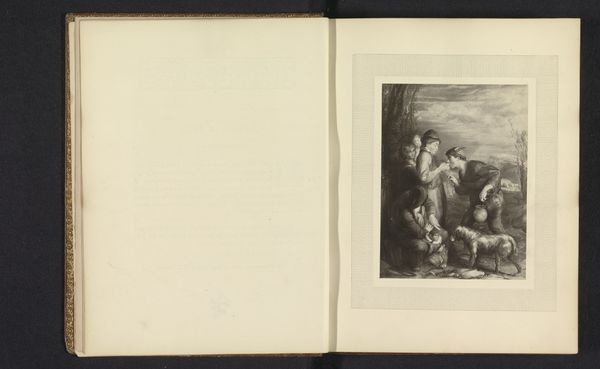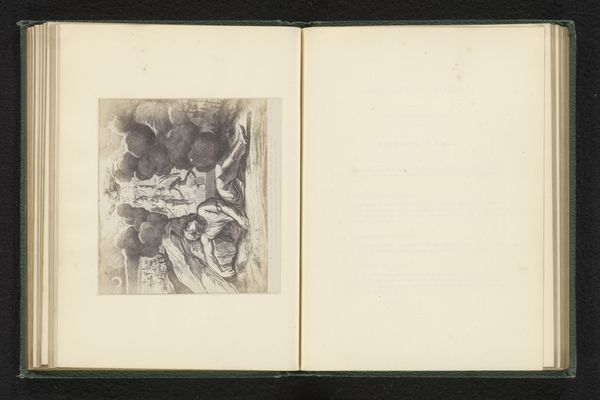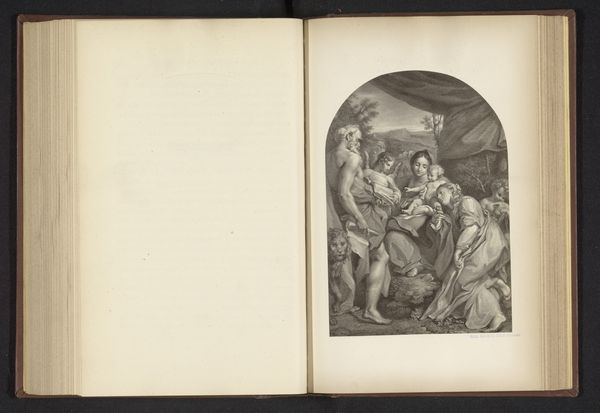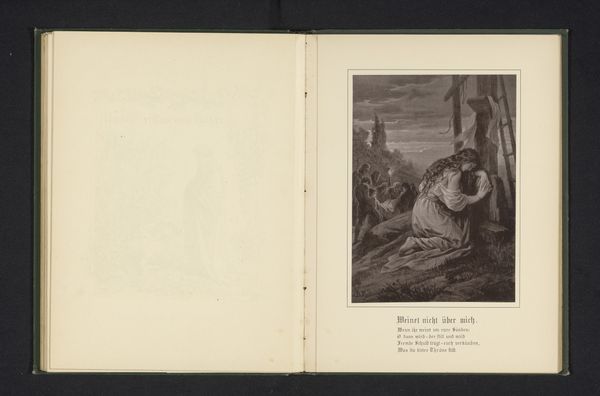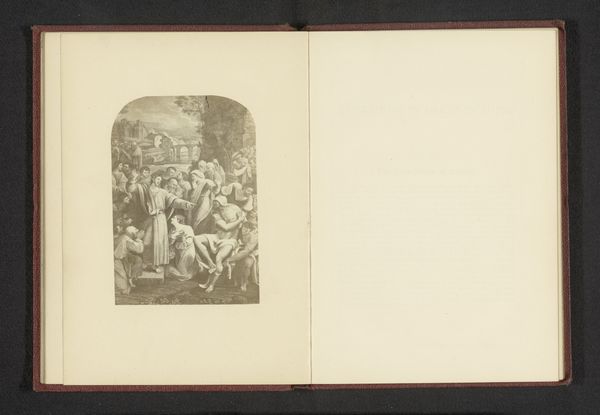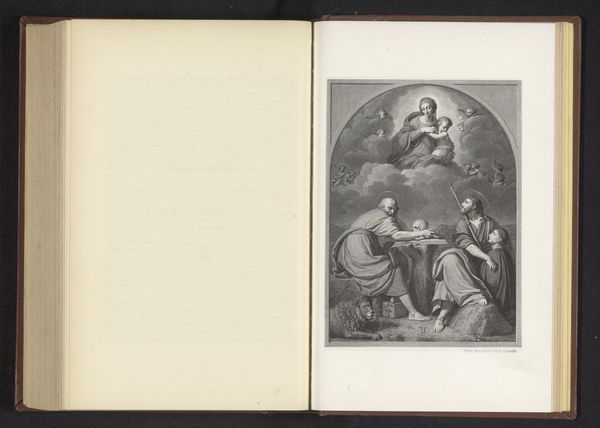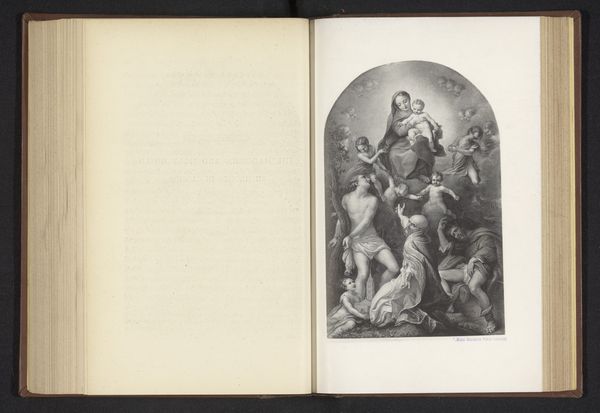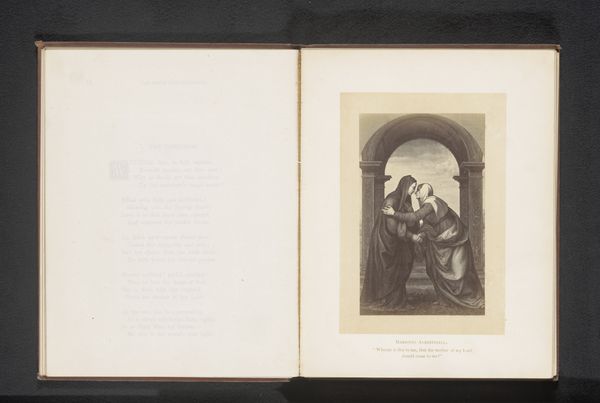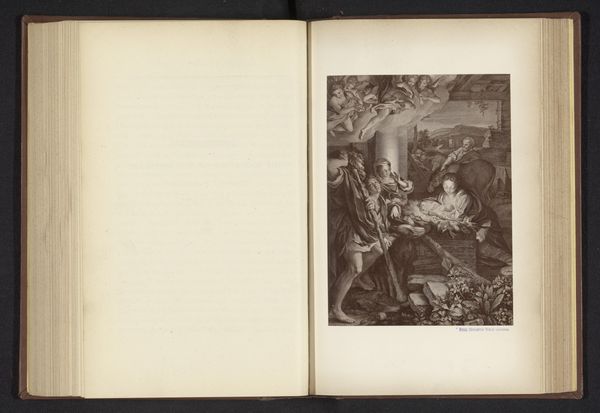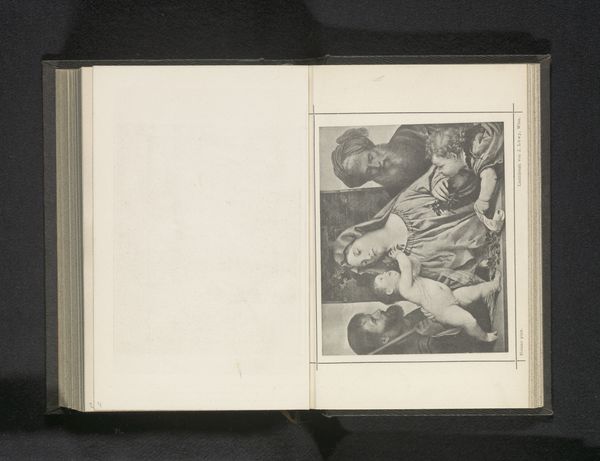
Fotoreproductie van een prent naar een schilderij, voorstellende de aanbidding der herders before 1871
0:00
0:00
print, engraving
#
narrative-art
# print
#
landscape
#
figuration
#
11_renaissance
#
history-painting
#
engraving
Dimensions: height 127 mm, width 97 mm
Copyright: Rijks Museum: Open Domain
Curator: Here we have a photographic reproduction of an engraving dating to before 1871. The print depicts the Adoration of the Shepherds, after a painting by an anonymous artist. Editor: My first thought? The textures look fascinating even through the reproduction, and the overall feeling is one of intimate reverence. It seems to invite the viewer into the scene rather than observing from afar. Curator: Absolutely. These kinds of reproductive prints were critical in disseminating imagery to a wider audience. It allowed access to masterpieces even without physically visiting a gallery. The narrative becomes more widely available, shaping public understanding of religious and historical scenes. Editor: I’m especially interested in the translation from paint to engraving. You lose some of the color and tonal subtleties, sure, but you gain this incredible line work. It makes me wonder about the labor involved. The engraver is mediating the painter’s vision and introducing their own craft into the mix, almost like a collaborative venture separated by time and space. Curator: Indeed. The layers of mediation are significant. And who consumed these images? Were they accessible to a broad segment of society or primarily those within particular social strata, reinforcing existing hierarchies even through ostensibly ‘religious’ images? Editor: That's an excellent point. It is likely destined for bourgeois consumption within an intimate setting like a family bible or private collection where printed imagery provided an affordable and morally upright subject for home decor. I think such reproductions gave the bourgeoisie another vehicle for claiming status. Curator: Which speaks to how the market influenced what and how artists created, then. Consider also, the print’s existence underscores the public role art plays in shaping religious and cultural norms. Editor: Right. This exploration reveals a network connecting religious representation, artisanal work, economic circulation, and audience formation. The journey of this image and its subsequent copies makes its art historical value even greater in our view.
Comments
No comments
Be the first to comment and join the conversation on the ultimate creative platform.
